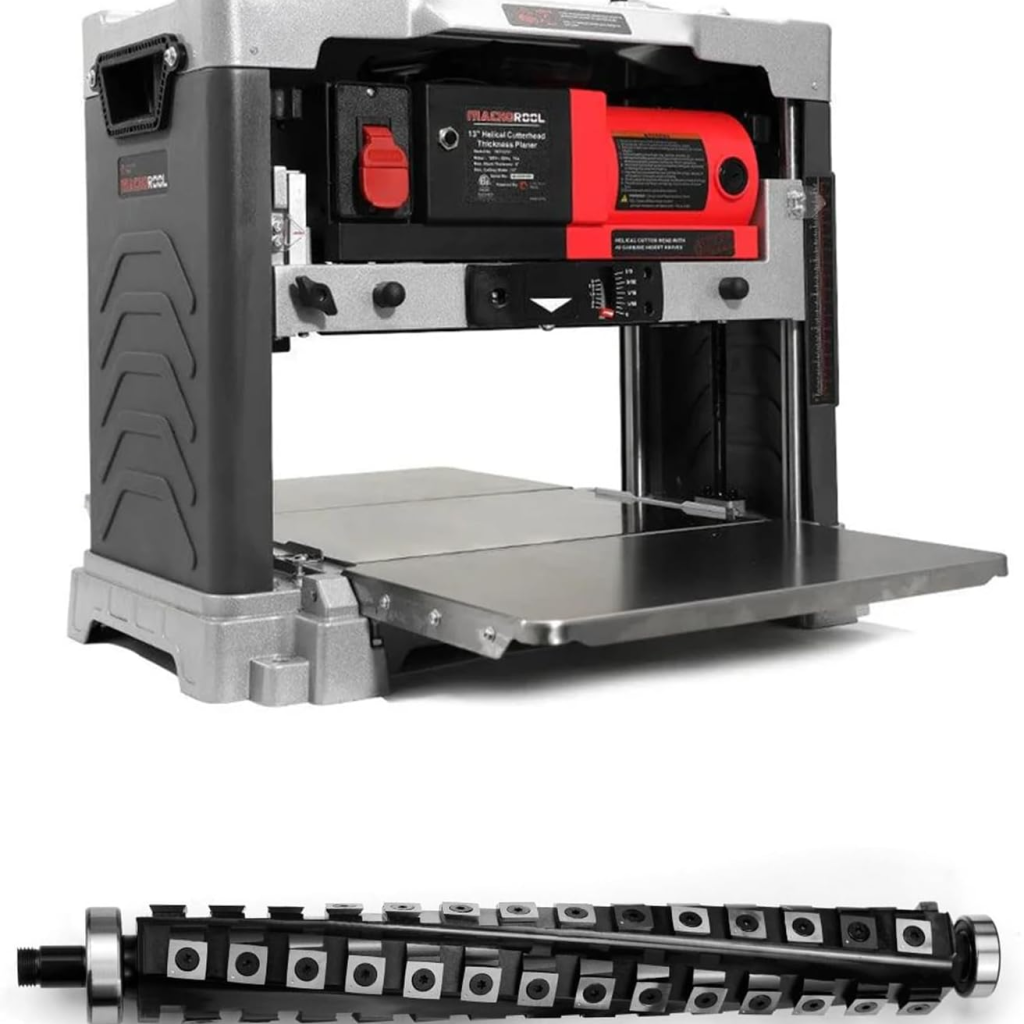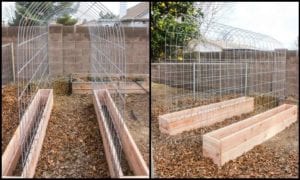Whether you’re renovating or building from scratch, a benchtop planer is a small‑shop upgrade that pays off immediately. The best benchtop planer delivers precise thicknessing for clean fits, smoother faces that shorten sanding, and the power to mill rough or reclaimed boards into uniform parts. In this Black Friday guide, we combine curated picks with clear explanations of cutterheads, feed rates, dust control, and snipe prevention so you know what matters most.
Contents
Uses of a Benchtop Planer
For renovators, the primary use is precision thicknessing. These bring boards to exact, uniform dimensions so doors, casings, shelves, and built-ins fit cleanly with existing work. Having the best benchtop planer at home lets you mill lumber to tight tolerances, reducing shimming and filler while delivering a professional-looking fit.
For DIYers, a benchtop planer excels at surface preparation by producing consistently smooth faces that greatly reduce sanding time. A cleaner finish right off the machine means you can move faster to glue-ups and topcoats with fewer scratch patterns and less dust.
A benchtop planer also unlocks value by letting you turn rough-sawn or budget lumber into dimension-accurate, uniform-thickness stock. With the best benchtop planer, you can transform affordable or reclaimed material into project-ready parts, stretching your budget without compromising quality.
Best Benchtop Planer on Black Friday
Take advantage of the prices during the holidays by finding the best benchtop planer on Amazon during Black Friday. We curated the top five of the list that will be great for your garage or workstation:
VEVOR Power Benchtop Planers
The VEVOR Power Benchtop Planers use a dual‑speed feed system that lets you choose between fast stock removal and a slower, smoother finishing pass, handy when you’re dimensioning rough lumber first and then dialing in a clean final surface on a project like a walnut desk top. That flexibility minimizes tear‑out on figured boards and saves time by matching feed rate to the task.
A three‑knife cutterhead paired with a 13-inch wide table and extended infeed/outfeed support helps keep long stock flat and stable, so shelves and face-frame parts come out consistent in thickness. A strong motor and dust port make it easier to maintain steady throughput and a cleaner workspace during long milling sessions.
- Three‑knife cutterhead for smoother finishes
- Dual‑speed feed for roughing vs. finishing passes
- 13″ capacity with extended infeed/outfeed support

FindBuyTool 13″ Benchtop Wood Thickness Planer
The FindBuyTool 13″ Benchtop Wood Thickness Planer uses a true 4-row helical cutterhead with 40 tungsten-carbide inserts to deliver a shear cut that minimizes tear-out and leaves a near-sanded surface. On projects like figured-maple cutting boards, reclaimed panels, or cabinet doors, that cleaner shearing action reduces sanding time and helps maintain crisp edges and grain clarity.
A rigid 4-column, anti‑wobble carriage keeps thickness consistent (tolerance under 0.1 mm), while the 8-position repeat depth stop makes batching parts to identical dimensions straightforward. Powered by a 120V, 15‑amp motor spinning up to 20,000 RPM with a 27.5 FPM feed rate, its 13-inch width and 1/8-inch max cut depth suit most small-shop stock preparation without overloading the machine.
- True helical cutterhead with 40 carbide inserts for smoother, tear‑out‑resistant cuts
- 4‑column design with <0.1 mm thickness tolerance plus 8‑position repeat depth stop
- 120V 15A motor (20,000 RPM) with 27.5 FPM feed rate and 13″ capacity

Kayrain 13” Benchtop Planer
The Kayrain 13” Benchtop Planer focuses on precision with a laser‑calibrated lead screw and a claimed 0.008″ thickness tolerance to help curb snipe and keep boards consistent. That accuracy is especially helpful when batch-sizing face frames, drawer fronts, or edge‑glued panels where uniform thickness saves sanding, shimming, and rework.
A 15A, 2000W motor provides solid torque for common hardwoods, while a three‑knife cutterhead using double‑sided HSS blades balances finish quality with low consumable cost. With 13″ capacity, up to 1/8″ max cut depth, and dual 35 mm dust ports rated to capture up to 85% of debris, you can move rough stock to finish-ready surfaces more quickly while keeping the workspace cleaner.
- 0.008″ precision tolerance via laser‑calibrated lead screw for reduced snipe
- Three‑knife cutterhead with double‑sided HSS blades for clean cuts and easy maintenance
- Dual 35 mm dust ports with up to 85% chip capture for faster cleanup

WOODSTARTER 13-Inch Wood Planer
If you’re shopping Black Friday for the best benchtop planer, the WOODSTARTER 13-Inch Wood Planer stands out for its capacity and user-friendly design. A 2000W motor spins a 3-blade HSS cutterhead at 10,000 RPM, pairing solid stock removal with a smooth finish. The infeed/outfeed extensions expand to a 29-inch table length, while a precision-machined cast iron base and steel plates help keep boards flat and reduce chatter.
Practical shop touches include a 21 FPM feed rate, a multi-size dust port that fits common hoses, and built-in overload/overheat protection that automatically shuts down on excessive current. A top return roller speeds material handling between passes, and a limit stop helps keep depth-of-cut within a safe maximum, handy for repeatable thicknessing.
- 13″ width capacity: up to 6.2″ board thickness: 21 FPM feed rate
- 2000W motor: 3-blade HSS cutterhead at 10,000 RPM for clean finishes
- 29″ total table length with foldable infeed/outfeed extensions

Hoteche 10-Inch Benchtop Planer
The Hoteche 10-Inch combo gives you two essential milling tools in one footprint. The 13A, 120V motor spins to 9,000 RPM for reliable stock removal, while the included stand boosts stability and working comfort when you’re flattening faces, squaring edges, and bringing boards to final thickness.
Capacity and control are the draw here: you get a 10″ width, adjustable cut depth with a clear lifting scale, and a steady 6 m/min (≈19.7 FPM) feed for consistent surfaces. The long jointer table (about 37.3″ x 10″) and separate planer table (about 10.6″ x 12″) support real-world project lumber, and the vacuum connector helps keep chips under control during repeat passes.
- 10″ jointer/planer combo with included stand to save space and add stability
- 13A, 120V motor: no‑load speed 9,000 RPM for smooth material removal
- Cut range: jointer up to 0–3 mm: planer up to 0–2 mm, with 6 m/min feed rate
- Table sizes: jointer approx. 37.3″ x 10″: planer approx. 10.6″ x 12″

How to Choose a Shop‑Smart Benchtop Planer
Choosing the best benchtop planer hinges on performance, precision, and ownership cost. Prioritize cut quality, capacity, dust control, and support. This guide distills key criteria DIYers and renovators should weigh.
Cut quality and surface finish
Surface finish starts at the cutterhead. Compare straight‑knife designs with segmented options, and match cutterhead speed to feed rate. Solid infeed/outfeed support and a dependable head lock minimize snipe.
Calibrated depth gauges and small, repeatable cut increments improve results on figured stock. The best benchtop planer leaves minimal tear‑out and maintains parallel thickness end‑to‑end, reducing sanding time and saving material.
Capacity and power headroom
Match capacity to your projects: width, maximum thickness, and minimum board length. A stout motor with stable feed rate maintains pace in hardwoods without bogging, even on wider stock.
Check duty cycle, thermal protection, and recommended circuit to avoid nuisance trips. Extra power headroom lets you take lighter passes for better finish when needed, a hallmark of the best benchtop planer for demanding shops.
Stability, tables, and snipe control
Stable machines deliver flatter boards. Weight, a rigid chassis, and flat tables help the board track straight. Adjustable infeed/outfeed extensions support longer pieces and reduce lever action at the knives that causes snipe.
Look for a positive cutterhead lock and precise column guides to keep the head from drifting under load. If you work on a bench, verify the base footprint and mounting options.
Setup, calibration, and ease of use
Out of the box accuracy saves time. Seek clear depth scales, reliable turret stops for common thicknesses, and easy parallelism adjustments to keep cuts consistent across the width. Quick‑change knife systems or indexable inserts reduce downtime and setup frustration.
Smooth crank action with minimal backlash makes micro‑adjustments predictable. Thoughtful carriage locks, accessible reset switches, and simple belt or chain tension checks keep maintenance approachable for new users.
Dust collection and noise management
Effective chip evacuation protects finish quality and lungs. Prioritize a sealed hood with a standard port size that mates to your shop vac or dust collector, and consider adapters if needed.
Efficient extraction reduces recutting chips and prevents clogging at the outfeed. Closed‑cell gaskets and tight clearances help. For shared spaces, compare sound profiles at typical loads and plan for ear protection or strategic enclosure.
Blades, maintenance, and running costs
Ownership costs add up over time. Check blade availability and pricing, whether double‑edged knives or indexable inserts, and evaluate how long an edge realistically lasts in your wood mix.
Look for straightforward alignment procedures, accessible clean‑out points, and sensible lubrication intervals. Warranty length, service documentation, and parts support matter. A planer that’s inexpensive to maintain encourages frequent use and better results across projects.

Safety, ergonomics, and support
Safety and comfort shape daily experience. Favor a large, easy‑to‑hit power switch, clear guards, and automatic thermal or overload protection. Grippy handles and intuitive controls reduce fatigue during repeated thicknessing sessions.
Good manuals, exploded diagrams, and responsive support channels simplify troubleshooting. If portability matters, assess lift points and balance when carrying. Proper PPE, push blocks for short parts, and disciplined workflows remain non‑negotiable.
Conclusion
Choosing well starts with honest project requirements and a clear budget. Balance cut quality, capacity, stability, and dust control against maintenance needs and long‑term support. Hands‑on evaluation, listening for strain, checking snipe, and verifying parallelism beats spec sheets alone. With a thoughtful checklist and realistic expectations, you’ll identify the best benchtop planer for your shop and enjoy faster builds, cleaner surfaces, and fewer headaches.
Are you looking for projects to use with your processed lumber? Check out our guide on making a reclaimed lumber sidewalk!






